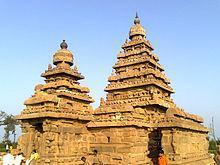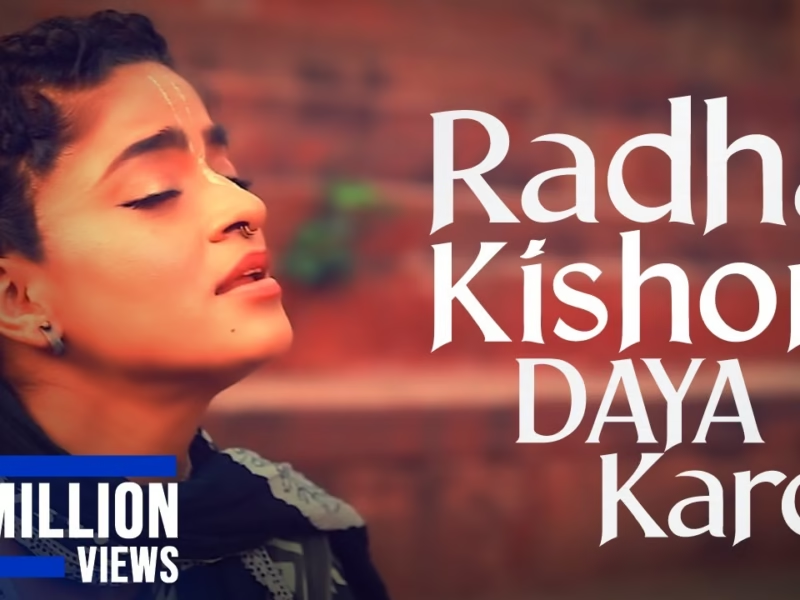Shore Temple, Kanchipuram, Tamil Nadu
| Date built: | 700–728 |
|---|---|
| Deity: | Lord Shiva and Lord Vishnu |
| Architectural style: | Dravidian architecture |
| Major festivals | – |
| Locale: | Mamallapuram or Mahabalipuram, Kanchipuram District |
| District:: | Kanchipuram |
| Address: | Mahabalipuram, Tamil Nadu 603104 |
| Phone | – |
The Shore Temple (built in 700–728 AD) is so named because it overlooks the shore of the Bay of Bengal. It is a structural temple, built with blocks of granite, dating from the 8th century AD. At the time of its creation, the site was a busy port during the reign of Narasimhavarman II of the Pallava dynasty. As one of the Group of Monuments at Mahabalipuram, it has been classified as a UNESCO World Heritage Site since 1984.It is one of the oldest structural (versus rock-cut) stone temples of South India
Architecture
Shore Temple is also acknowledged for being the first stone structure made by Pallavas. Before this, the monuments used to be carved out of the rocks or stones. Unlike other monuments of the region, Shore Temple is a five-storied rock-cut structural temple more willingly than monolithical. In southern India, this is one amongst the earliest and most important structural temples. The spire is extensively decorated with carvings and sculptures. In the recent years, a stone wall has been constructed to protect the shrine from further sea-erosion.
Perched on a 50 feet square plinth, the pyramidal structure raises to the extent of 60 feet. Presenting a typical specimen of Dravidian temple architecture, Shore Temple generates an exclusive combination of history and natural splendor. The temple was designed to grasp the first rays of the rising sun and to spotlight the waters after sunset. In the words of Percy Brown, Shore Temple served as “a landmark by day and a beacon by night”.
Legend / Local stories
Shore Temple comprises three shrines, where the prominent ones are dedicated to Lord Shiva and Lord Vishnu. In the garbhagriha (sanctum sanctorum), an image of Shivalinga embraces the site. At the rear end, one can find two shrines facing each other. Here, one shrine is dedicated to Ksatriyasimnesvara and other to Lord Vishnu. In the shrine, Lord Vishnu is imaged reclining on the ‘Seshanag’, which is a symbol of consciousness in Hinduism.
The exterior wall of the shrine to Lord Vishnu and the internal side of the boundary wall are elaborately carved and sculptured. The images on the sculpted panels depict scenes from everyday life. However, the sculptures are incredibly real and artistic. The exterior walls of the temple are segregated by plasters into bays, where the lower part has been impressed into a series of nurturing lions. The archeological department has excavated certain other figures from the site.
Shore Temple is no more a living temple. The structure of the temple makes one to contemplate and perhaps, it was erected basically as a work of art. The Pallavas were known to be the great patrons of art and were keen to create their own style of temple architecture. In the present day, Shore Temple makes the background of Mahabalipuram Dance Festival that is held in Jan /Feb every year. The festival was organized to promote the traditional dance as well as tourism in Mahabalipuram.
Marco Polo and the European merchants that came to Asia after him called the site Seven Pagodas. One of these is believed to be the Shore Temple. The temple probably acted as a landmark for navigation of their ships. As it appears like a Pagoda, the name became familiar to the seafarers. This structural temple complex was the culmination of the architectural creations that were initiated by the King Narasimhavarman II in mid 7th century starting with the Cave temples and the monolithic Rathas.Even though the architectural creation of sculpturing cut-in and cut-out structures continued during subsequent periods, as seen in the Atiranachanda cave, the Pidari rathas and the Tiger cave, the main credit for the architectural elegance of the Shore Temple complex in the category of structural temples goes to the King Rajasimha (700–28 AD), also known as Narasimhavarman II, of the Pallava Dynasty. It is now inferred that this temple complex was the last in a series of temples that seemed to exist in the submerged coastline; this is supported by the appearance of an outline of its sister temples off the coast during the Tsunami of 2004 which struck this coastline. The architecture of the Shore Temple was continued by the Cholas (in the temples that they built) who ruled Tamil Nadu after defeating the Pallavas. The tsunami of December 2004 that struck the coastline of Coromandel exposed an old collapsed temple built entirely of granite blocks. This has renewed speculation that Mahablaipuram was a part of the Seven Pagodas described in the diaries of Europeans, of which six temples remain submerged in the sea. The tsunami also exposed some ancient rock sculptures of lions, elephants, and peacocks that used to decorate walls and temples during the Pallava period during the 7th and 8th centuries. Though the tsunami of 26 December 2004 that occurred in the Indian Ocean struck the temple and the surrounding garden, the Shore Temple was not badly damaged, as the water level returned to its normal level within a few minutes. The damage was to the foundation of the bali peetam (sacrificial altar) in front of the temple, the steps leading to the boat jetty, and the small shrine with the Varaha (Boar) sculpture at the basement of the Shore temple. As the temple foundation is on hard granite rock, it could sustain the waves created by the tsunami; the groynes erected around the temple area on the coastline also aided its protection. According to the two inscriptions found in the slab of smaller Shiva temple, the names of the three temples mentioned are as Kshatriyasimha Pallaveshvara-griham, Rajasimha Pallaveshvara-griham and Pllikondaruliya-devar. The entire temple complex is called as Jalashayana (lying in water). This confirms that the Vishnu shrine was the first shrine to be excavated here. The inscription on the lintel of the Vishnu shrine also mentions this as Narapatisimha Pallava Vishnu Griha where Narapatisimha is a title of Rajasimha. An archaeologist has observed that: “In locating the temple on the very margin of the sea, exposing it to avoidable dangers, the builders, there can be little doubt, sought theatrical effect.As the Shore Temple was initially identified as part of the Seven Pagodas at Mahabalipuram, an ancient Hindu legend referred to the origin of these pagodas in mythical terms. Prince Hiranyakasipu refused to worship the god Vishnu. The prince’s son, Prahlada, loved and was devoted to Vishnu greatly and criticized his father’s lack of faith. Hiranyakasipu banished Prahlada but then relented and allowed him to come home. Father and son quickly began to argue about Vishnu’s nature. When Prahlada stated that Vishnu was present everywhere, including in the walls of their home, his father kicked a pillar. Vishnu emerged from the pillar in the form of a man with a lion’s head, and killed Hiranyakasipu. Prahlada eventually became the king, and had a grandson named Bali. Bali founded Mahabalipuram on this site.
Photo Gallery
How to Reach:
One can easily reach Shore Temple by taking regular Buses or by hiring Taxis from anywhere in Tamil Nadu
Shore TempleShore Temple is a standing testimonial to the regal heritage of India. Located at Mahabalipuram, Shore Temples can easily be reached by taking regular buses or by hiring taxis from anywhere in Tamil Nadu. The nearest airport is located at Chennai that lies at a distance of 60 kms from Mahabalipuram. One of the most photographed monuments in India, Shore Temple is a structural monument on the shores of Bay of Bengal.
Built in the 7th century, Shore Temple depicts the royal taste of Pallava dynasty. During the reign of Rajasimha, the temple saw its construction when Pallava art was at its apex. Ravaged by wind and sea, the temple has witnessed the historical events of India. This work of genius was recognized and listed amongst the World Heritage Sites by UNESCO.
Contact Details
Official Address












